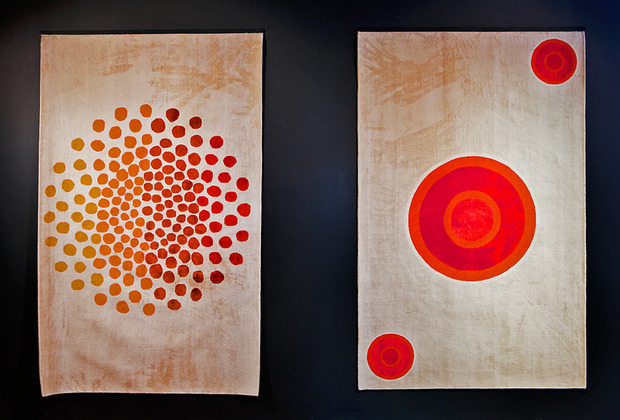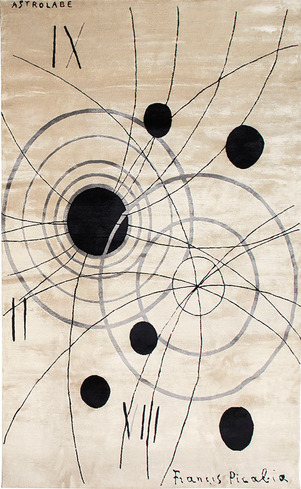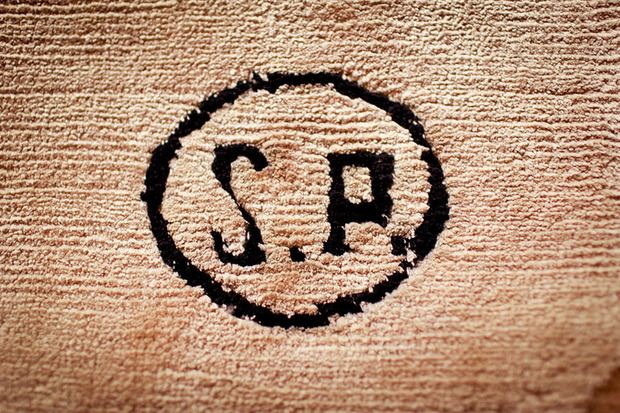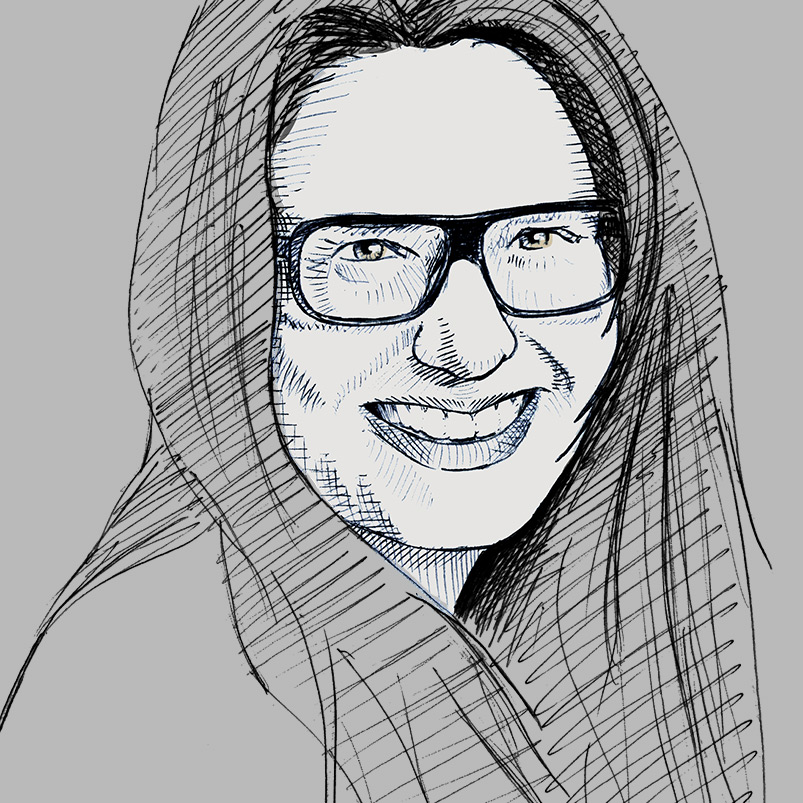Sabine de Gunzburg: Artist Rugs Collection
The Parisian designer transforms her ideas, artist drawings and even a Gehry watercolor into handwoven, 100% silk rugs


Four years ago, arts patron Sabine de Gunzburg was working as an interior designer for friends. “We couldn’t find a good rug at a good size, good colors, whatever—so I decided to go to India to see if it was possible to make it in silk,” de Gunzburg says. Finding craftsmen from India, Nepal, Kashmir and elsewhere who could make rugs from 100% silk on looms, de Gunzburg started a collection of rugs from her own designs and now offers her resources to artists, translating their sketches into a thick, cushioned reality.
De Gunzburg received permission from Francis Picabia‘s estate to make limited edition rugs from two of the deceased avant-garde French artist’s works; the same went for the French painter Serge Poliakoff. Works from contemporaries include Berlin-based artist Matthias Bitzer (the rug was lent to Atelier Courbet by his gallery Almine Rech for this show), furniture designer Vladimir Kagan and renown architect Frank Gehry. In the case of the latter, it was a watercolor that was translated to a woven silk rug.


The Artist Rugs Collection along with de Gunzburg’s own rug collection, S2G Design, make their stateside debut at Atelier Courbet, a new NYC gallery and shop that represents master craftspeople from around the world (like traditional bookmakers Thornwillow Press and Kyoto-based potters Asahiyaki).
This passion for art runs in de Gunzburg’s blood; her grandfather Jean Seligmann was a well-known art and antiques dealer who had a space at Place Vendôme, and whose brothers Jacques and Arnold ran the famed Jacques Seligmann & Co art gallery. More specifically, the inspiration stemmed from de Gunzburg’s mother, France Seligmann, who bought a gallery (now known as Galerie Lucie Weill & Seligmann, although de Gunzburg did not keep the gallery after her mother passed away) that specialized in drawings—not paintings—by modern artists. The gallery also partnered with Marie Cuttoli, a unique patron of contemporary tapestries, who encouraged Picasso, Matisse, Fernand Léger, Georges Braque, Joan Miro and other well-known modern artists to draw tapestry cartoons that would be translated to an unconventional medium for them. The nature of a tapestry, however, meant that they were destined to be hung only on walls. de Gunzburg’s rugs, on the other hand, are functional pieces of art that can be displayed and used in different ways.

“The thing is, the first rugs have always been done in silk. If you come from Arabic, Turkish, Persian [cultures]—it’s always been silk, but never thick.” This new process that results in a soft yet surprisingly very strong structure matches the contemporary content of the rugs. An added benefit to using silk as the only material is the resulting color. “If you move from one side to another, you see the colors change and that is only silk who gives you that. It’s another rug. With one color, you get 10 tones—10 shades, I will say.”

The silk is dyed with pigments specifically for each project; a loom is custom-built for each new rug design, and then taken down once the rug has been produced. This is the bespoke approach that de Gunzburg oversees. A classic rug might take three months while a more difficult artist’s rug—Matthias Bitzer’s for example, that not only has a variety of colors but more difficult designs such as the letters of the English alphabet—can take up to four or five months. “I do rugs like a haute couture dress,” says de Gunzburg. “It’s not a collection—I don’t have any showroom, I don’t have any stock, meaning that the interior designer or the artist or the private client comes to me with their drawings and they ask my help and I do what they want. It’s a unique piece every time, one of a kind.”

“Rugs were completely ‘out’ until about five years ago, and I think it’s a little bit like fashion,” she says. “It’s very funny, people were not interested and then rugs became something that people wanted again. But when you buy this kind of piece, you buy a piece of art. So if you move, you move with it. You take your rug with you.” Rather than representing a single idea or person, these rugs represent the exchange between the contemporary artist, the craftspeople, de Gunzburg herself and the gallery.
The show is now on view through 30 April 2014 at Atelier Courbet, 177 Mott Street, New York. Works from the Artist Rugs Collection are either in editions of three or six. Interior designers or artists who are interested in commissioning a rug through de Gunzburg can contact Atelier Courbet for more information.
Images courtesy of Atelier Courbet












